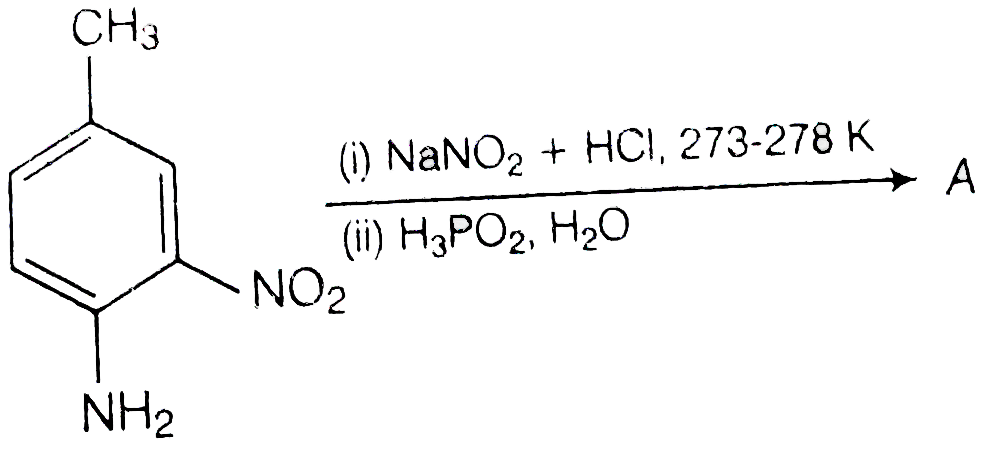How is boron obtained from borax ? Give the chemical reactions involved. Draw the structure of B2H6 and give its reaction with HCl.
To obtain boron from borax, we follow a series of chemical reactions. Here’s a step-by-step breakdown of the process:
Step 1: Heating Borax
Reaction:
When borax (Na₂B₄O₇·10H₂O) is heated with sulfuric acid (H₂SO₄), it forms sodium sulfate (Na₂SO₄), tetra boric acid (H₂B₄O₇), and water (H₂O).
Chemical Equation:
\( \text{Na}_2\text{B}_4\text{O}_7 \cdot 10\text{H}_2\text{O} + \text{H}_2\text{SO}_4 \rightarrow \text{Na}_2\text{SO}_4 + \text{H}_2\text{B}_4\text{O}_7 + 10\text{H}_2\text{O} \)
Step 2: Formation of Boric Acid
Reaction:
Tetra boric acid (H₂B₄O₇) reacts with water to form boric acid (H₃BO₃).
Chemical Equation:
\( \text{H}_2\text{B}_4\text{O}_7 + \text{H}_2\text{O} \rightarrow 4\text{H}_3\text{BO}_3 \)
Step 3: Heating Boric Acid
Reaction:
When boric acid (H₃BO₃) is heated to a high temperature, it decomposes to form boron trioxide (B₂O₃) and water.
Chemical Equation:
\( 2\text{H}_3\text{BO}_3 \xrightarrow{\text{heat}} \text{B}_2\text{O}_3 + 3\text{H}_2\text{O} \)
Step 4: Reduction of Boron Trioxide
Reaction:
Boron trioxide (B₂O₃) is then reduced with magnesium (Mg) to produce boron (B) and magnesium oxide (MgO).
Chemical Equation:
\( \text{B}_2\text{O}_3 + 3\text{Mg} \rightarrow 2\text{B} + 3\text{MgO} \)
Structure of Diborane (B₂H₆)
Diborane (B₂H₆) is a dimer of borane (BH₃). The structure can be represented as follows:
- It consists of two boron atoms connected by hydrogen atoms.
- The bonding involves normal two-center two-electron bonds and three-center two-electron bonds (also known as banana bonds).
Structure:
H|H−B−H|B−H∣H
Reaction of Diborane with HCl
Reaction:
When diborane (B₂H₆) reacts with hydrochloric acid (HCl) in the presence of aluminum chloride (AlCl₃), it forms chlorodiborane (B₂H₅Cl) and hydrogen gas (H₂).
Chemical Equation:
\( \text{B}_2\text{H}_6 + \text{HCl} \xrightarrow{\text{AlCl}_3} \text{B}_2\text{H}_5\text{Cl} + \text{H}_2 \)
Summary of Steps:
1. Heat borax with sulfuric acid to form tetra boric acid.
2. Tetra boric acid reacts with water to form boric acid.
3. Heat boric acid to produce boron trioxide and water.
4. Reduce boron trioxide with magnesium to obtain boron.
5. Draw the structure of diborane and describe its bonding.
6. Show the reaction of diborane with HCl.
Reaction:
When borax (Na₂B₄O₇·10H₂O) is heated with sulfuric acid (H₂SO₄), it forms sodium sulfate (Na₂SO₄), tetra boric acid (H₂B₄O₇), and water (H₂O).
\( \text{Na}_2\text{B}_4\text{O}_7 \cdot 10\text{H}_2\text{O} + \text{H}_2\text{SO}_4 \rightarrow \text{Na}_2\text{SO}_4 + \text{H}_2\text{B}_4\text{O}_7 + 10\text{H}_2\text{O} \)
Reaction:
Tetra boric acid (H₂B₄O₇) reacts with water to form boric acid (H₃BO₃).
\( \text{H}_2\text{B}_4\text{O}_7 + \text{H}_2\text{O} \rightarrow 4\text{H}_3\text{BO}_3 \)
Reaction:
When boric acid (H₃BO₃) is heated to a high temperature, it decomposes to form boron trioxide (B₂O₃) and water.
\( 2\text{H}_3\text{BO}_3 \xrightarrow{\text{heat}} \text{B}_2\text{O}_3 + 3\text{H}_2\text{O} \)
Reaction:
Boron trioxide (B₂O₃) is then reduced with magnesium (Mg) to produce boron (B) and magnesium oxide (MgO).
\( \text{B}_2\text{O}_3 + 3\text{Mg} \rightarrow 2\text{B} + 3\text{MgO} \)
Diborane (B₂H₆) is a dimer of borane (BH₃). The structure can be represented as follows:
- The bonding involves normal two-center two-electron bonds and three-center two-electron bonds (also known as banana bonds).
H|H−B−H|B−H∣H
Reaction:
When diborane (B₂H₆) reacts with hydrochloric acid (HCl) in the presence of aluminum chloride (AlCl₃), it forms chlorodiborane (B₂H₅Cl) and hydrogen gas (H₂).
\( \text{B}_2\text{H}_6 + \text{HCl} \xrightarrow{\text{AlCl}_3} \text{B}_2\text{H}_5\text{Cl} + \text{H}_2 \)
1. Heat borax with sulfuric acid to form tetra boric acid.
2. Tetra boric acid reacts with water to form boric acid.
3. Heat boric acid to produce boron trioxide and water.
4. Reduce boron trioxide with magnesium to obtain boron.
5. Draw the structure of diborane and describe its bonding.
6. Show the reaction of diborane with HCl.
Topper's Solved these Questions
- P-BLOCK GROUP 13 - BORON FAMILYBOOK - CENGAGE CHEMISTRY ENGLISHCHAPTER - P-BLOCK GROUP 13 - BORON FAMILYEXERCISE - Ex 6.1 (Objective)
14 Videos
- P-BLOCK GROUP 13 - BORON FAMILYBOOK - CENGAGE CHEMISTRY ENGLISHCHAPTER - P-BLOCK GROUP 13 - BORON FAMILYEXERCISE - Exercise (Linked Comprehension)
37 Videos
- P-BLOCK GROUP 13 - BORON FAMILYBOOK - CENGAGE CHEMISTRY ENGLISHCHAPTER - P-BLOCK GROUP 13 - BORON FAMILYEXERCISE - Solved Examples
16 Videos
- ORGANIC REACTION MECHANISMBOOK - CENGAGE CHEMISTRY ENGLISHCHAPTER - ORGANIC REACTION MECHANISMEXERCISE - Analytical and Descriptive
6 Videos
- P-BLOCK GROUP 14 - CARBON FAMILYBOOK - CENGAGE CHEMISTRY ENGLISHCHAPTER - P-BLOCK GROUP 14 - CARBON FAMILYEXERCISE - Exercises Archives (Subjective)
9 Videos
Similar Questions
Write the structure of B2H6 and its reaction with HCl(excess).
View SolutionHow is boron obtained from borax ? Give chemical equations with reaction conditions.
View SolutionHow will you convert ethane into ethanol? Give the chemical reaction involved.
View SolutionHow is ethene prepared from ethanol ? Give the reaction involved in it.
View SolutionHow is acetic acid obtained from acetylene (Give chemical equations only).
View SolutionHow is acetic acid obtained from acetylene (Give chemical equations only).
View SolutionHow is acetic acid obtained from acetylene (Give chemical equations only).
View SolutionGive the structure of 'A' in the following reaction.

View SolutionIdentify [A][B] and [C] and gives the complete chemical reactions involved.

View SolutionGive the chemical reaction, when ethanal is heated with HI.
View Solution
